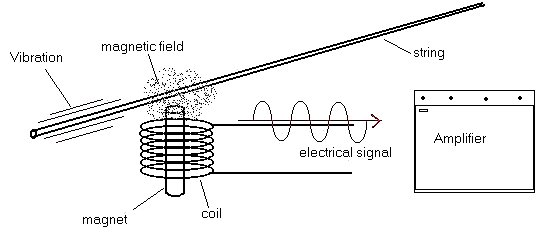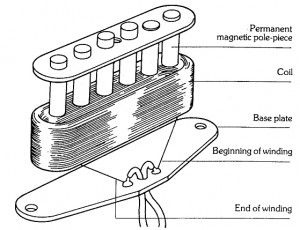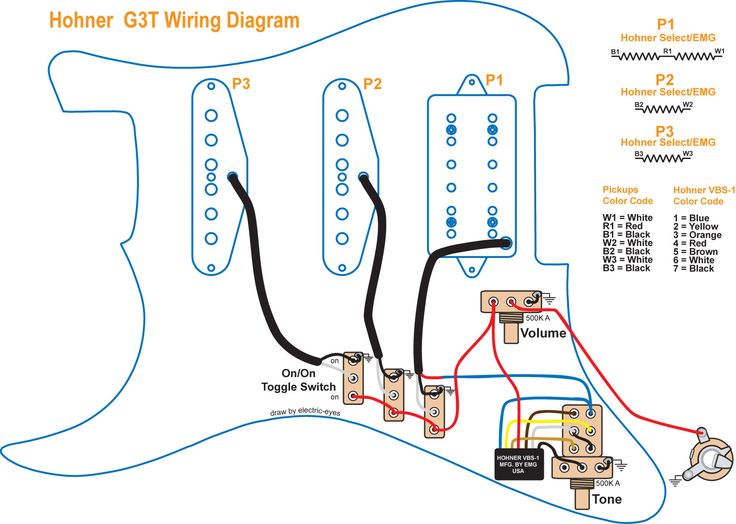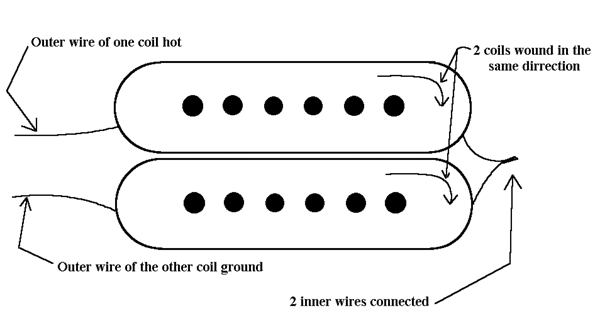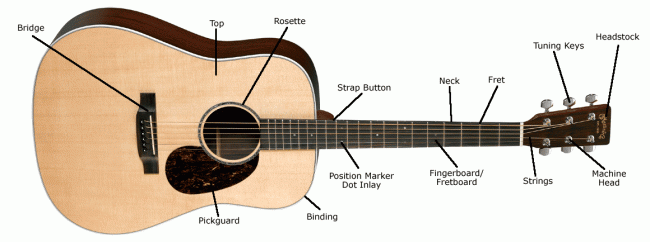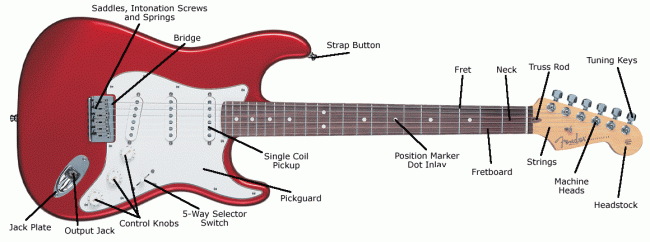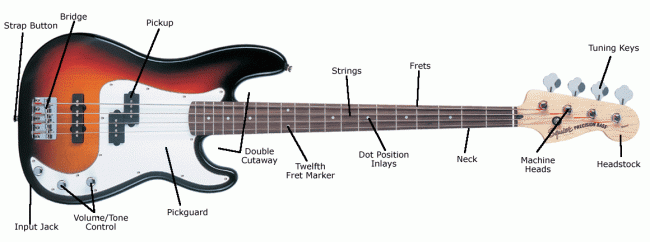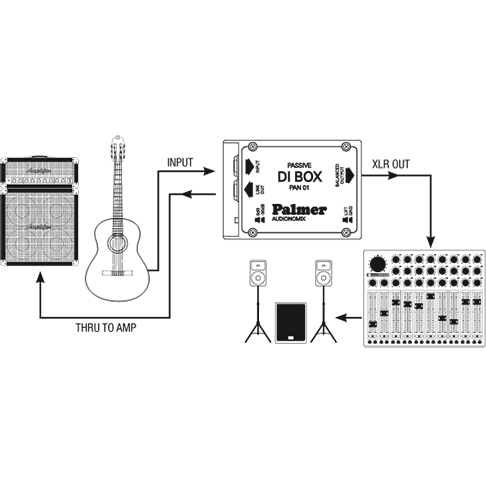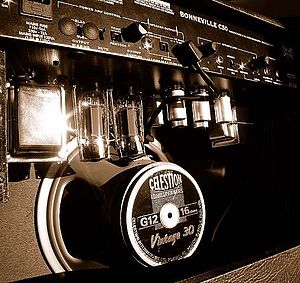A transducer converts energy from one form to another. There are many different types in audio production:
"For our purposes, a transducer is an electronic component that transforms one type of energy into another. Some examples: A microphone converts sound into electric current. Likewise, a speaker converts electric current into sound. Other common transducers include magnetic guitar pickups, piezo pickups, phonograph cartridges (remember those?) and tape heads." —Sweetwater Glossary
Electric guitars and basses require "transducers (pickups) to convert string vibrations into an electrical signal in order to make sound. Even solidbody electric guitars do make some acoustic sound on their own, but without feeding the pickup output into an amp, there is not enough volume produced for the instrument to be useful on its own." —Glossary
A microphone converts fluctuations in air poressure to changes in electric "current usually for the purpose of transmitting or recording sound. In all microphones, sound waves are translated into mechanical vibrations in a thin, flexible diaphragm. These vibrations are then converted by various methods into an electrical signal." —Glossary
"A speaker driver is the active element ... within a speaker cabinet that creates sound by moving in response to an audio signal." —Glossary
The tape head in a tape recorder converts "electrical energy to varying magnetism. The magnetic flux from the head is used to magnetize recording tape, which is coated with a thin layer of oxide." —Glossary
Your inner ear converts the mechanical energy of vibrations of hair cells into electrical signals that are transmitted to your brain, which are then interpreted as sound.
Pickups
Electric instruments have physical systems that vibrate, as opposed to electronic instruments that create signals from electronic circuits or signal processing chips. Electric guitars, basses, pianos, violins etc. usually lack a resonating body to amplify the vibrations. Instead, the vibrations are converted by pickups, transducers that convert changes in a magnetic field to changes in voltage.
The guitar string moves through a field caused by a magnet, and induces a changing voltage in the wires wrapped around it.
There are three parts to a pickup: 4 or 6 magnets (depending on whether it is for a bass or guitar), a coil, and a bobbin–the frame that holds the magnets and the wire wrapped around them.
Guitars can have more than one set of pickups that the player can engage in different combinations to get variations in tone.
Pickups are good antenae and are prone to pickup up hum. The most popular way of reducing this is to have two coils wrapped in opposite directions. String motion induces voltage across both coils in the same direction, whereas electromagnetic interference induces voltage in opposite directions.
When the signals from both coils are added together the noise voltages cancel out since they are out of phase, and the signal voltage is improved, creating a higher signal-to-noise ratio.
"Electronically speaking, a Single Coil pickup consists of a single coil of wire wrapped around six (in guitar pickups) magnetic poles. While doing a great job of generating a voltage from the string vibration, they also tend to act a little like an antenna, picking up different kinds of EMI fields. As a result, the Single Coil pickup tends to hum quite often, and even quite loudly at times.
The Humbucker style pickup has two coils linked in series out of phase. This configuration causes the [hum in the] two coils to cancel each other out, eliminating or 'bucking' the hum while providing an even higher voltage signal from the string vibrations. The result is a much quieter pickup with greater output.
Tonally speaking the Humbucker pickup is characterized as having a fatter, warmer sound as compared to a single coil. A single coil is traditionally considered to have a brighter and cleaner tone quality." —Sweetwater inSync article
Enrichment:
- Video: How pickups work
- Video: Phase cancellation in humbucking pickups
- Video: Impedance in guitar pickups
Passive vs. Active Pickups
There are two kinds of pickups to choose from. Passive pickups provide you with a dynamic sound and a warm, full tone. The downside to passive pickups is that they give you less overall control over the tone of your instrument. Active pickups are a much newer development than passive pickups. The tone that active pickups produce is bright, percussive, and clear. Additionally, active pickups require a built-in battery-powered preamp, producing a much higher output than passive pickups. You must remember to periodically change the battery. —Bass Buying Guide
Quiz yourself:
- What is the difference between single and humbucker pickups?
- What is the main advantage and disadvantage of active pickups?
